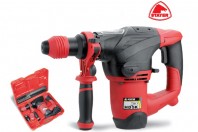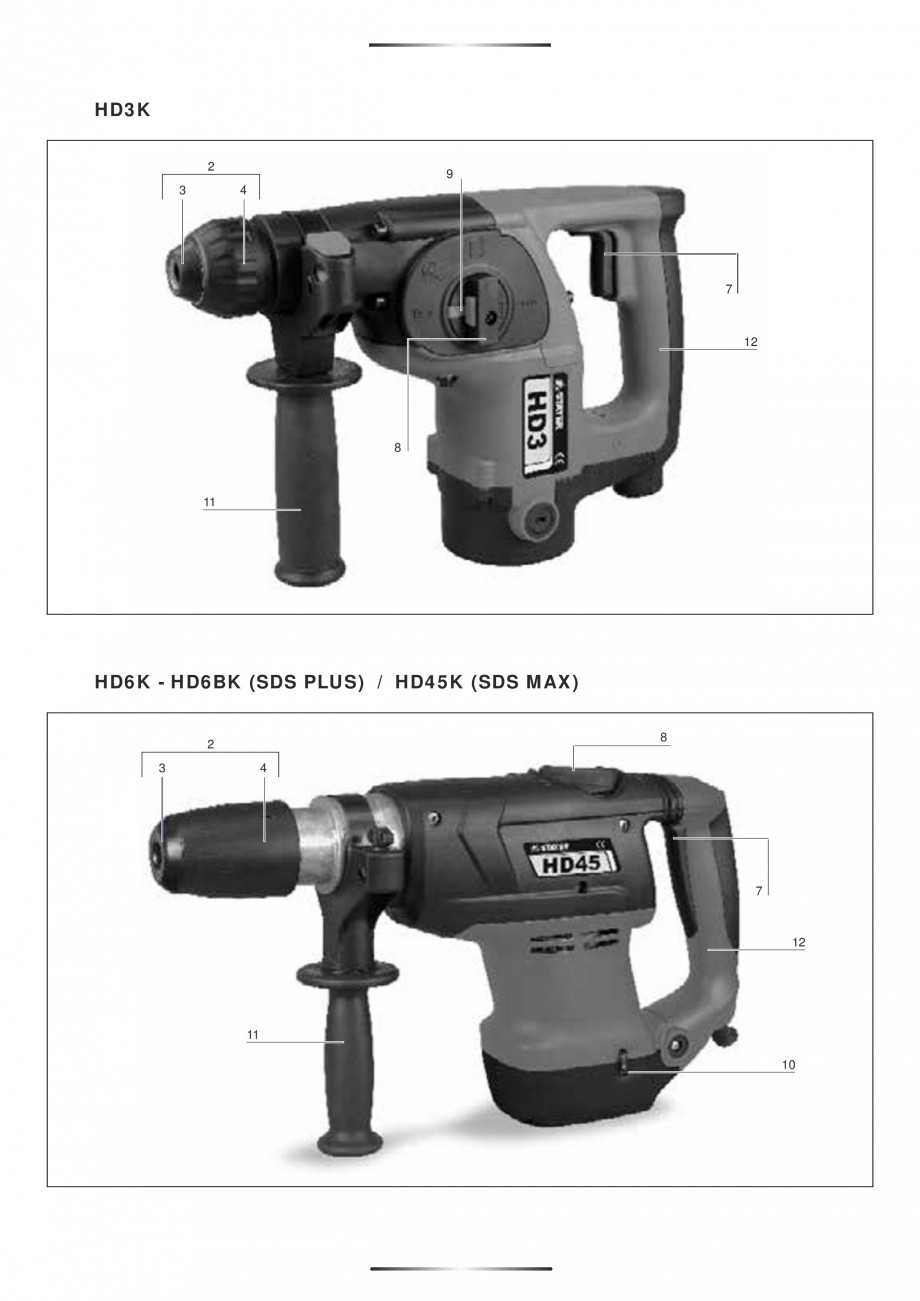Ciocan rotopercutor 810 W STAYER SDS-plus HD 27BK
Limba: Engleza, Germana, Franceza, Italiana, Spaniola
Tip documentatie: Instructiuni montaj, utilizare
Salvează pdf
Full screen
agegriff
15 Sperrbolzen
SDS Einsatzwerkzeug einsetzen
Mit dem SDS-Bohrfutter können Sie das
Einsatzwerkzeug einfach und bequem ohne Verwendung zusätzlicher Werkzeuge wechseln.
16 Werkzeugschaft
17 Werkzeugaufnahme
18 Chisel Wahlschalter
Setzen Sie das Einsatzwerkzeug drehend in die
Werkzeugaufnahme ein, bis es selbsttätig verriegelt wird.
3.- Montage
Überprüfen Sie die Verriegelung durch Ziehen
am Werkzeug.
HD21K, HD27K / HD27BK, HD28K, HD5K,
HD5BK, HD50K, HD55K, HD3K, HD6K, HD6BK,
HD45K, MH2K, MH6K, MH8K
Das SDS-Einsatzwerkzeug ist systembedingt frei beweglich. Dadurch entsteht beim
Leerlauf eine Rundlaufabweichung. Dies hat
keine Auswirkungen auf die Genauigkeit des
Bohrlochs, da sich der Bohrer beim Bohren
selbst zentriert.
f Ziehen Sie vor allen Arbeiten am Elektrowerkzeug den Netzstecker aus der Steckdose.
3.1.- Zusatzgriff
SDS-Einsatzwerkzeug entnehmen
f Verwenden Sie Ihr Elektrowerkzeug nur mit
dem Zusatzgriff 11.
Schieben Sie die Verriegelungshülse 4 nach hinte
... ascunde
Alte documentatii ale aceleasi game Vezi toate
Fisa tehnica
1 p | RO
SDS-plus HD 27BK
Fisa tehnica
1 p | RO
SDS-plus HD 5K































































